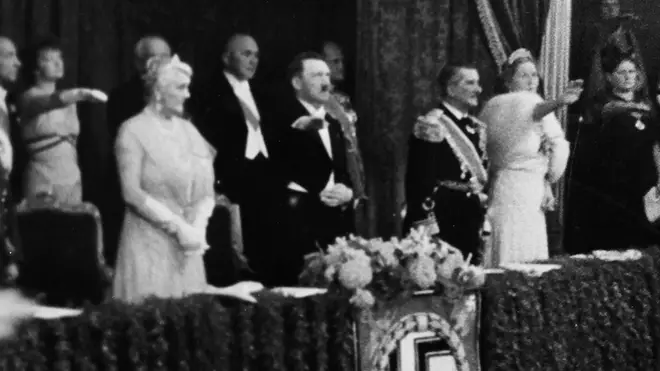On Air Now
Early Breakfast with Lucy Coward 4am - 6:30am
4 March 2020, 13:33 | Updated: 4 March 2020, 14:15

In his early years, the future Nazi leader drafted an opera based on an unfinished work by Wagner. Now, the musical manuscript is on display for the first time.
Opera, Nazism, Hitler and the Holocaust have a complex history. With the playing of the Rienzi Overture at Hitler’s Nazi Party rallies in the 1930s, Wagner and German opera became forever associated with the propaganda, evil and horrors of the Third Reich.
But beyond Wagner’s music, many might be surprised to learn that, when he was 20 years old, Adolf Hitler himself wrote an opera.
Wieland der Schmied (Wieland the Smith) was drafted by the future Nazi leader in 1908 and based on an unfinished work of the same name by German composer Richard Wagner – his admiration for whom is well-documented.
In his first volume of Mein Kampf, Hitler wrote: “At the age of twelve, I saw… the first opera of my life, Lohengrin. In one instant I was addicted. My youthful enthusiasm for the Bayreuth Master [Wagner] knew no bounds.”
Now, a sheet from the manuscript is on display in Austria in a new exhibition of artefacts from the dictator’s early life, showing how his past shaped his ideology. A piano sketch of the first page was made by one of young Hitler’s few friends, August Kubizek.
Read more: The ‘Shame Flute’ was used to punish bad musicians in the Middle Ages >
Hitler's justly forgotten opera attempt goes on display in Austria https://t.co/iMT4Wh47AN
— The Local Austria (@TheLocalAustria) March 1, 2020
Hitler began writing the opera after just a few months of piano lessons, according to one of the exhibition’s curators, Christian Rapp.
Rapp told AFP that Hitler’s ambitious project clearly demonstrated the future dictator’s “inflated sense of his own abilities”.
History tells us his artistic abilities never quite matched up to those inflated ambitions. Hitler applied for the Vienna Academy of Fine Arts in 1907 and 1908, and was rejected on both occasions.
Rapp adds that Hitler was always quick to find a scapegoat for his failures. “Whenever something went wrong, it was always somebody else’s fault, not his own.”
Read more: Wagner, Hitler’s favourite composer? >

The manuscript is a key item in Young Hitler: the Formative Years of a Dictator, the new exhibition now on display in Sankt Poelten in Lower Austria.
It includes artefacts from the Nazi leader’s early life, all collected between 1907 and 1920 by Kubizek who kept them as memories of his own youth, before realising they might be of historical importance.
Other objects include Hitler’s early paintings and architectural sketches, including one of a music hall, and letters and postcards written by Hitler to Kubizek.
Young Hitler in Austria, Rapp says, “was already ‘a bomb,’ if you like. World War I provided the fuse and then it was ignited in Germany — but you can make out the ingredients during his time here in Austria.”
As well as documenting his personal history, the exhibition also explores the political and social context in Austria at the turn of the 20th century.